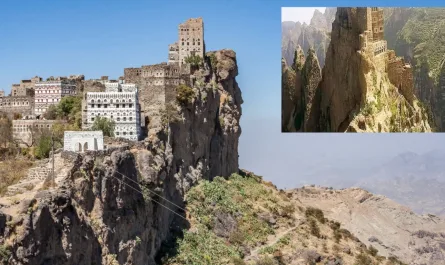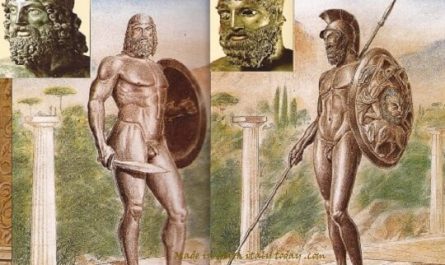Across the vast expanse of the Roman Empire, from the misty hills of Britannia to the deserts of North Africa, an intricate network of roads connected cities, armies, and cultures like the arteries of a living empire. Built over 2,000 years ago, these ancient Roman roads—some still in use today—stand as a testament to unparalleled engineering prowess. With over 400,000 kilometers of roads, including 80,000 kilometers of paved highways, the Romans crafted a system that not only facilitated trade and conquest but also reshaped the very concept of infrastructure. How did a civilization without modern machinery create such durable marvels, and what secrets lie in their construction?
The Genius of Roman Road Design
Roman roads, known as viae, were engineering masterpieces designed for durability, efficiency, and accessibility. Unlike the speculative claims of alien influence in Peru’s Toro Muerto petroglyphs, the construction of these roads is well-documented and grounded in human ingenuity. The Romans employed a meticulous, multi-layered approach to road-building, ensuring their highways withstood centuries of traffic, weather, and warfare.

The construction process began with surveying, using tools like the groma to plot straight routes, often visible as arrow-straight lines across Europe’s landscapes. Once the path was set, workers dug a trench 1 to 1.5 meters deep, filling it with layers of materials tailored to the terrain. The foundation, or statumen, consisted of large stones or gravel to stabilize the ground. Above it, the rudus layer of crushed stone and lime mortar provided strength, followed by the nucleus, a mix of gravel, sand, or clay for a smooth base. The top layer, or summa crusta, was paved with tightly fitted stones—often basalt or limestone—creating a cambered surface that shed rainwater to prevent erosion. This layered system, described by ancient writers like Statius, ensured roads remained stable even in marshes or flood-prone areas.
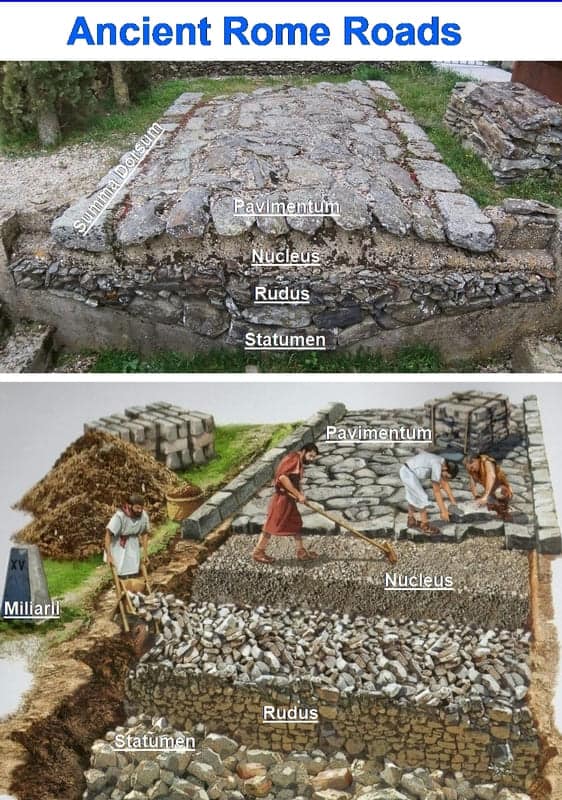
The Romans also engineered drainage systems, with ditches and culverts to divert water, and milestones (miliaria) to mark distances, some inscribed with the names of emperors like Trajan. Roads like the Via Appia, begun in 312 BC, exemplify this precision, stretching 540 kilometers from Rome to Brindisi with such durability that sections remain drivable today.
A Network for Empire
The Roman road system was not merely functional; it was a strategic masterpiece. Built primarily for military purposes, roads like the Via Egnatia, linking the Adriatic to Byzantium, allowed legions to march swiftly—covering up to 24 kilometers a day—while supply wagons ensured provisions reached far-flung outposts. This network, spanning from Hadrian’s Wall in Britain to the Euphrates in Mesopotamia, facilitated trade, communication, and cultural exchange, carrying goods like Egyptian grain, Spanish silver, and Chinese silk via the Silk Road’s western termini.
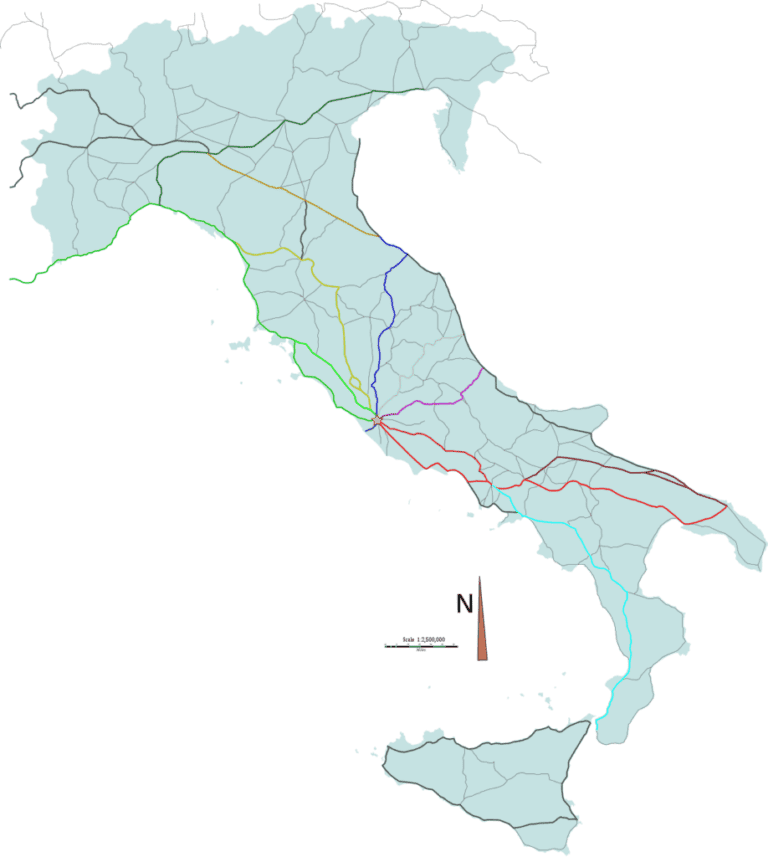
The roads’ design also reflected Roman pragmatism. Straight routes minimized travel time, though gentle curves or deviations were used to navigate hills or rivers. Raised causeways, like those over the Pontine Marshes, and bridges, such as the Ponte di Tiberio in Rimini, showcased advanced engineering, with some structures enduring earthquakes and floods for millennia. The Romans’ use of concrete (opus caementicium), made from volcanic ash and lime, further strengthened bridges and viaducts, a technology so advanced it rivals modern formulations.
Cultural and Symbolic Significance
Beyond their practical role, Roman roads were symbols of imperial power, much like the Jindo Sea Parting’s cultural resonance or the Toro Muerto petroglyphs’ spiritual depth. The construction of roads was a public act, often funded by wealthy magistrates or emperors to curry favor, as seen with Appius Claudius Caecus, who commissioned the Via Appia. These roads bore names like Via Flaminia or Via Aurelia, immortalizing their patrons while uniting diverse peoples under Roman rule.
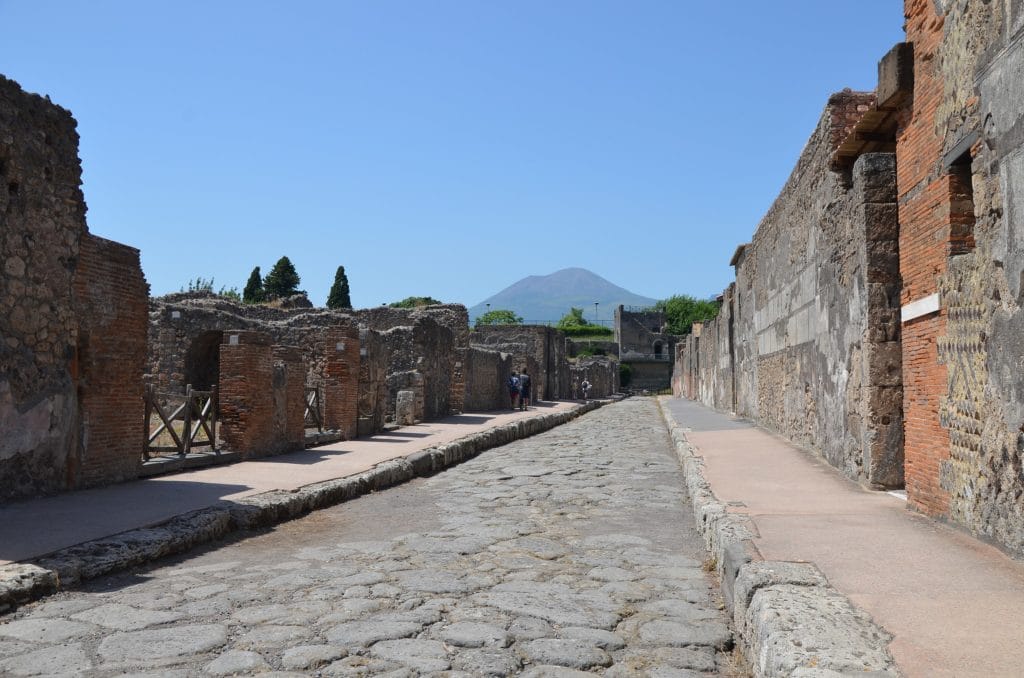
Local legends also wove roads into cultural narratives. In Britain, Roman roads like Watling Street were later mythologized as paths of giants or fairies, echoing the mystical allure of India’s “rohela people” in ancient rock art. Yet, unlike speculative claims about alien visitors, the roads’ legacy is tangible, with archaeological evidence like wheel ruts and roadside inns (mansiones) revealing a bustling network that shaped medieval and modern Europe.
Why They Endure
The durability of Roman roads lies in their obsessive attention to detail. The cambered design, precise layering, and robust materials allowed them to withstand centuries of use, from chariot wheels to modern vehicles. In Portugal, sections of the Via Lusitanorum still serve as local roads, while in Rome, the Via Appia Antica remains a popular walking path. This resilience contrasts with modern highways, which often require frequent repairs due to less durable asphalt.
The Romans’ engineering foresight also included sustainability. By sourcing local materials—basalt in Italy, flint in Britain—they minimized transport costs while ensuring compatibility with the environment. Their methods, rediscovered in the 19th century, inspired modern road-building techniques, underscoring their timeless genius.
A Legacy That Paves the Way
Like Nikola Tesla’s quest for universal patterns or the plasma bubble over Giza, Roman roads reflect humanity’s drive to master its environment. They were not the work of extraterrestrials, as some claim about ancient monuments, but of disciplined engineers, surveyors, and laborers who transformed the ancient world. Their legacy reminds us of the power of human ingenuity, much like the tragic lesson of Hannah Glass urges vigilance in everyday life.
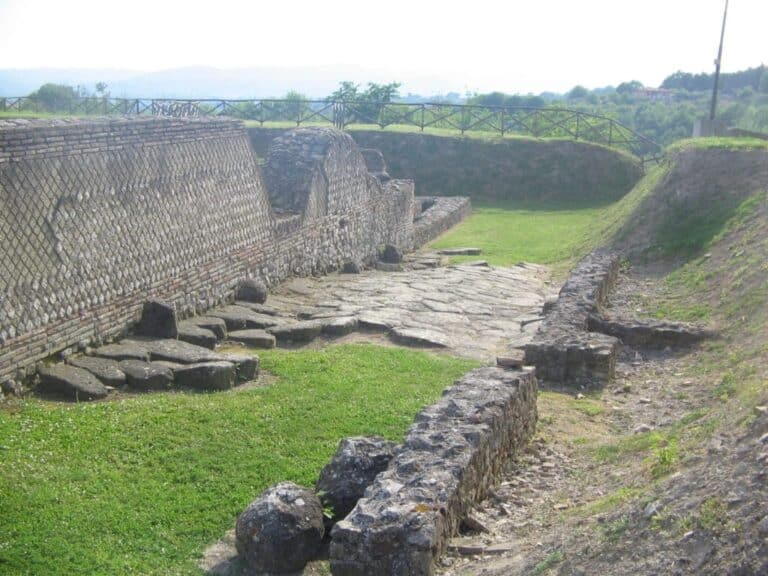
The next time you walk a cobblestone path or drive a straight country road, consider whether it traces a Roman via. These arteries of an empire continue to connect us to a past where engineering defied time, paving the way for civilizations to come. Explore sites like the Via Appia or Britain’s Fosse Way to witness this enduring marvel for yourself.
